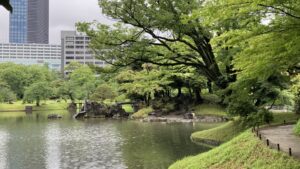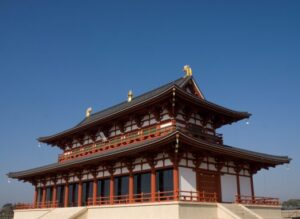Takeda Shrine: Takeda Singen's Life & Battles
Dedicated to the strongest warlord, Shingen
A 10-minute walk from Kofu Station in Yamanashi prefecture, Takeda Shrine stands at the foot of Yogai Mountain. Established in 1919 to enshrine Takeda Shingen (1521-1573, 武田信玄), the shrine is located on the site of the former Tsutsujigasaki-yakata, the residence of the Takeda clan. During the Warring States period (1467-1583), Takeda Shingen, known as the Tiger of Kai, was feared as the strongest warrior of his time, leaving behind numerous military achievements throughout his life. Among his notable achievements are the Battle of Kawanakajima, a series of five battles (some say six) over 11 years against Uesugi Kenshin, known as The Military God of Echigo (Niigata), and the Battle of Mikatagahara, where he made a great victory against Tokugawa Ieyasu (1543-1616, 徳川家康), who later became the shogun and founded the Edo shogunate. Shingen was a figure so feared that even a powerful warlord, Oda Nobunaga (1534-1582, 織田信長), an ally of Ieyasu, trembled before him.
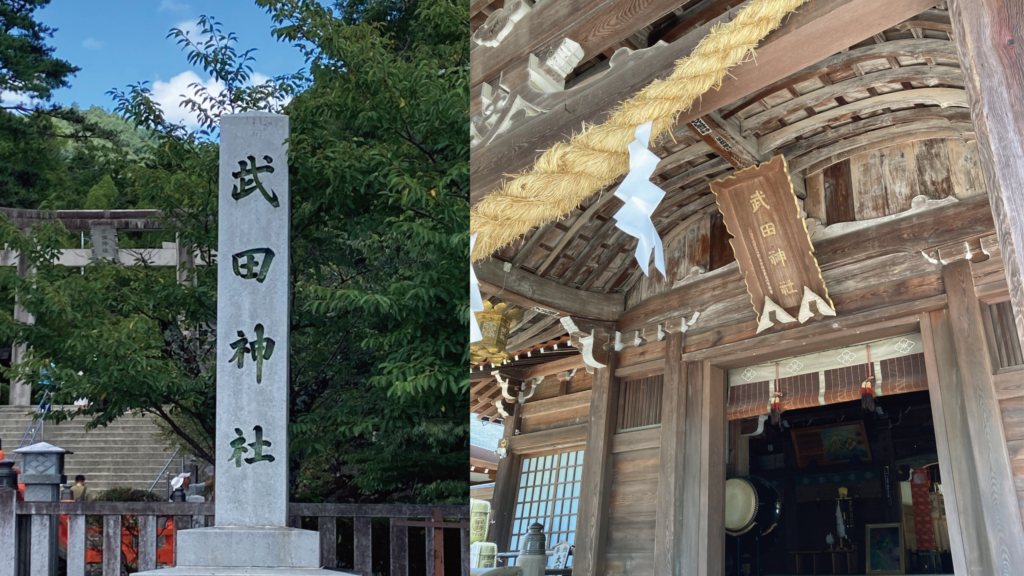
The Birth of Shingen
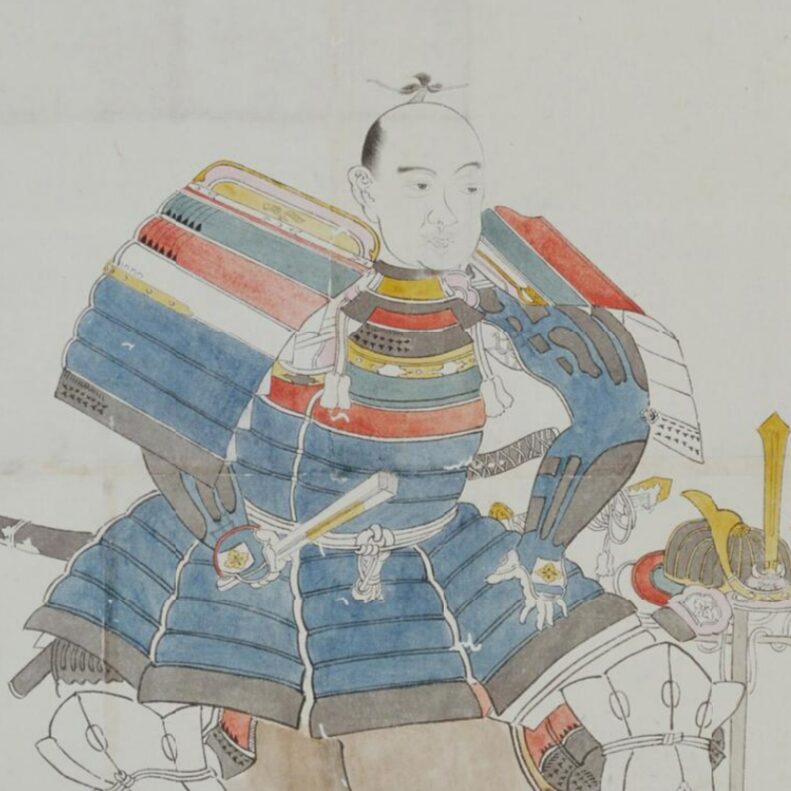
@ Historiographical Institute The University of Tokyo
In 1521, Shingen was born as the eldest son of Takeda Nobutora, who laid the foundation for the Takeda clan as a warlord in Kai (Yamanashi), at the foot of Yogaisan mountain, a fallback stronghold the fortress of Tsutsujigasaki-yakata. His birth occurred during a defensive battle against the forces of the Imagawa clan of Suruga Province. Following his father's victory, he was named Katsuchiyo, meaning bringing the victory. The Takeda clan was a prestigious family descended from the The 56th Emperor Seiwa (850-881, 清和天皇) through the Seiwa Genji line. As leaders of a renowned cavalry force that earned fame in many of the nation's most significant battles, they were a seasoned warrior family with a proud tradition of martial excellence. During the Muromachi period (1336-1573), they ruled Kai Province as a Shugo Daimyo (feudal lord), and later became famous throughout the country as warlord of the Warring State period. As the heir to the prestigious Takeda clan, Shingen studied classical Confucian texts such as the Four Books and Five Classics, as well as military treatises like The Art of War and Six Secret Teachings and Three Strategies. These formed the ideological and strategic foundation of the Takeda army.
Fūrinkazan – The Banner of Takeda Forces
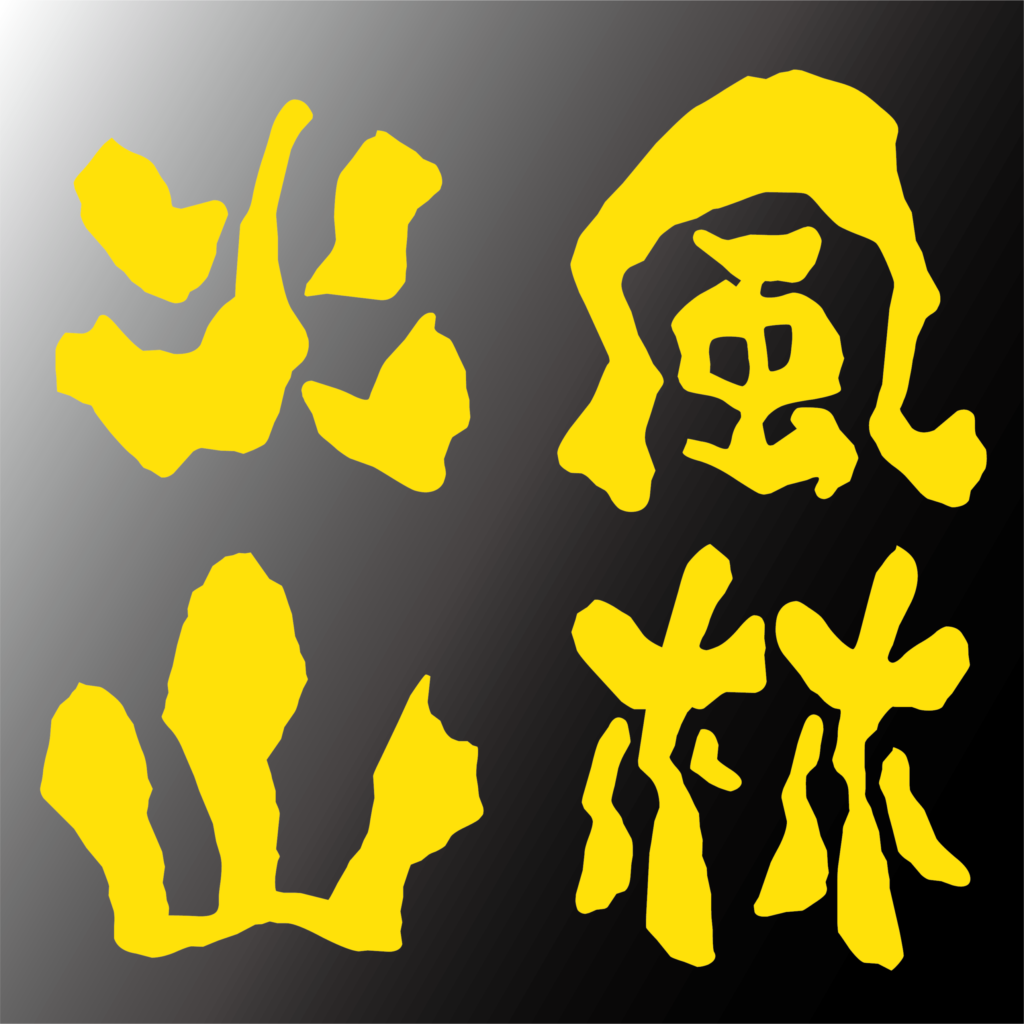
The phrase Fūrinkazan (風林火山) was emblazoned on the Takeda army’s banner. Taken from Sun Tzu's The Art of War, it reads: “Swift as the wind, silent as the forest, fierce as fire, and immovable as a mountain.” The next line continues: “As elusive as shadow, and as thunderous as lightning,” meaning the army should move undetected like darkness and strike as violently as a thunderbolt. This reflected Takeda Shingen’s military philosophy. He deployed Suppa—ninja operatives—to infiltrate enemy territory, gather intelligence, conduct assassinations, and set fires during night raids. He also built a structured system to ensure that intelligence collected by the Suppa was delivered directly to him. At the borders, retainers of senior Takeda vassals waited with swift horses, ready to rush information back to Shingen’s headquarters in Kōfu. Shingen he planned battles he could win based on the collected intelligence, then launched attacks as if to prove his strategy. After reporting, the Suppa would return to their post and continue their mission. Behind his numerous military achievements, we can glimpse the strength of Shingen, who placed great importance on intelligence and established an information gathering system.(Source: HIRAYAMA Yu, “The Reality of Shinobi in the Sengoku Period”)
Battles of Kawanakajima – An 11-Year Rivalry
In 1553, at the age of 33, Shingen confronted Uesugi Kenshin (1530-1578, 上杉謙信), the warlord of Echigo (Niigata), in northern Shinano at Kawanakajima. Shingen aimed to establish control over northern Shinano, which was one of the most fertile areas in the province, and to build a prosperous nation and secure access to the Sea of Japan trade routes —vital for the resource-poor, landlocked provinces of Kai and Shinano. If their borders were sealed off by neighboring countries, the supply of essential goods such as food would be cut off. For Kenshin, too, North Shinano was strategically important, close to his Kasugayama Castle, and he could not afford to yield. The two forces clashed intermittently over the next 11 years: in 1555, 1557, and in 1561 during the most intense battle.
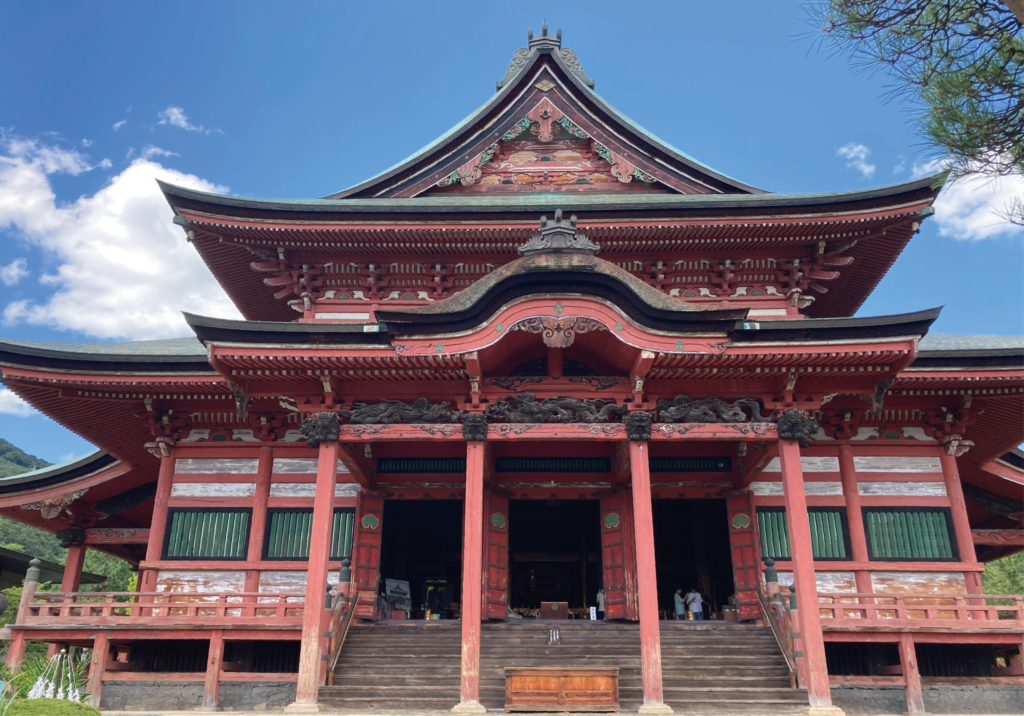
Before the second battle, fearing the destruction of Zenkōji Temple, Shingen moved its treasures, including Japan’s oldest statue of Amida Buddha, to Kai and built Kai Zenkōji Temple to enshrine them. He invoked divine protection following the model of Minamoto Yoritomo (1147-1499, 源頼朝), who had once rebuilt Zenkoji Temple after establishing the Japanese first samurai government in Kamakura. Shingen, as a descendant himself, used this symbolism to enhance his legitimacy.

@ Mizuno Hidehiko
After the third battle, he ordered the reconstruction of Suwa Taisha Shrine and the revival of its festivals such as Onbashira Festival, which served as a spiritual foundation for the people of Suwa. Thereby steadily advancing the consolidation the popular support and regional control over Shinano.
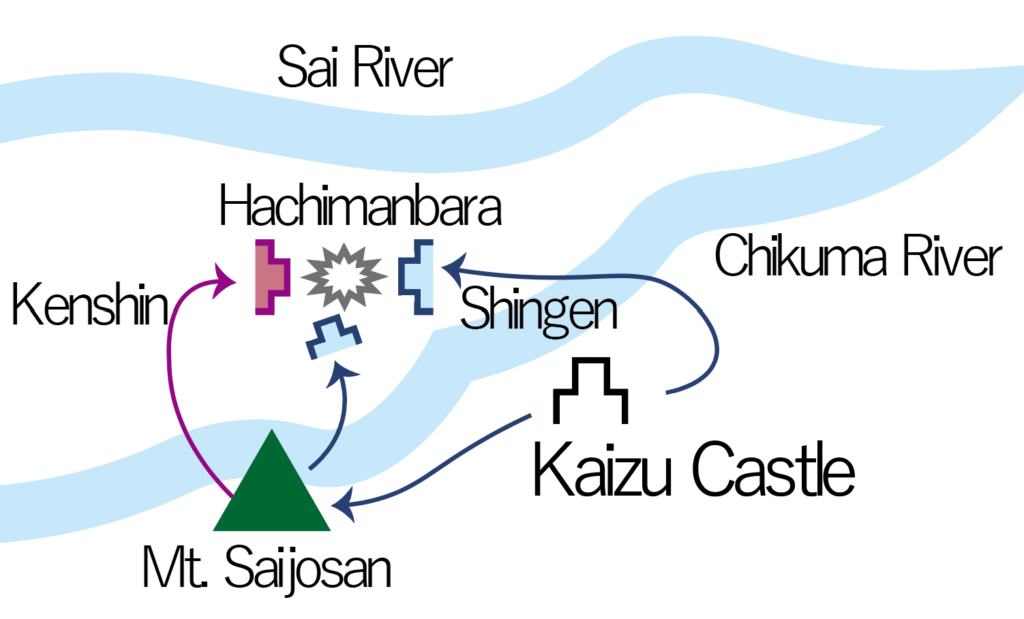
The fourth and most intense battle of Kawanakajima then began. Shingen stationed his forces at Kaizu Castle along the Chikuma River, while Kenshin positioned his forces on nearby Saijosan Mountain. Shingen divided its forces into two groups and sending a pincer attack Saijosan: a detached unit would storm Saijosan, while the main force led by Shingen waited in ambush at Hachiman-hara to encircle the Uesugi army as it descended from the mountain. However, Kenshin anticipated this strategy, descended the mountain under cover of night, crossed the river, and reached Hachimanbara by dawn. As the morning fog lifted, Uesugi troops appeared directly in front of Shingen at close range. Despite being at a disadvantage caused by divided into two forces, Takeda army fought fiercely against Kenshin’s kurumagakari formation. A detachment of the Takeda army that had rushed from Saijozan arrived at Hachiman-hara, and the Takeda army pushed back. After two hours of brutal combat, Shingen's younger brother, Nobushige, strategist Yamamoto Kansuke, and more 4,000 Takeda soldiers fell. Uesugi casualties were reportedly over 3,000. While Shingen managed to retain control over North Shinano, he was now 44 - well past middle age in a time when a lifespan of 50 was common.
Gaining Access to the Sea – Seizing Suruga

In 1560, following the death of Imagawa Yoshimoto at the Battle of Okehazama defeated by Oda Nobunaga, Shingen's sphere of influence changed dramatically. He successfully brought the coastal province of Suruga (Shizuoka) under his control. Shingen immediately built a castle at Ejiri (Shimizu) and appointed Yamagata Masakage, one of Takeda's Four Generals, as its lord. Singen also incorporated seafaring groups in Ise Bay under his command and formed the Takeda navy, the first in Takeda clan’s history. This enabled him to secure food from the fertile land, seafood, and salt, as well as supply routes for gunpowder and weapons. In 1571, on the eve of the Battle of Mikatagahara, he captured Okitsu Castle in Suruga, further strengthening his naval forces. The Takeda fleet, consisting of one large Atakabune warship and several smaller fast boats, played a key logisitical role in his westward campaign, assembling at Omaezaki and sailed along the seacoast to supply the main Tkeda army with weapons and provisions by sea.
Battle of Mikatagahara – The Western Campaign
In 1572, at the age of 52, Shingen launched an invasion of Tokugawa Ieyasu’s territory in Tōtōmi, by declaring “I will vent my three years of pent-up anger.” This anger was result of several factors. First, Ieyasu had broken ties with Shingen and allied with his rival Uesugi Kenshin. Secondly, taking advantage of the chaos caused by the Hōjō clan’s surprise attack on Shingen from behind, Ieyasu withdrew Shingen’s troops from Tōtōmi, which had been promised to Shingen under the agreement of a reward for conquest. As a result, Shingen not only had lost control of the region but also faced increased pressure from all sides.
Before entering battle at the opportune moment, Shingen sought the protection of the gods by reciting a waka poem, which had been believed to connect the divine and the human:
“With trust I call upon the divine wind of Hachiman—surely the branches of Hamamatsu will fall.” (Hamamatsu = Ieyasu’s residence, the branches = power)
This poem conveys Shingen's strong prayer and determination.
Shingen launched his campaign with the strategy of isolating Ieyasu’s stronghold, Hamamatsu Castle. A detached force led by Yamagata Masakage, one of the Four Generals of Takeda clan, advanced south along the Uregawa River, passing through Nagashino Castle and proceeding toward the Ii Valley. This maneuver cut off the land route connecting Hamamatsu Castle and Okazaki Castle. On the way, they also captured Iwamura Castle, an important stronghold of Oda Nobunaga, who was allied with the Tokugawa clan, in eastern Mino. Meanwhile, Shingen himself led a main force of 22,000 troops, captured Takatenjin Castle, a strategic point in Tōtōmi Province, and then advanced north along the Tenryū River, capturing Futamata Castle and crossing the Tenryu River. This allowed Shingen to march to Hamamatsu Castle from both the east and west. In addition, the Takeda Navy controlled the sea routes from the Enshū Sea to Mikawa Bay. As Shingen’s main force advanced toward Hamamatsu Castle, it suddenly veered westward, passed through Mikatagahara, and came to an abrupt halt just after reaching the top of the Houda slope—right at the point where the descent would begin. There, the troops reversed their orientation and took up battle formation. Meanwhile, the Tokugawa army, aiming to strike from behind as the Takeda forces began descending the slope ahead of them, was in pursuit and preparing to launch an attack. However, with the Takeda army suddenly coming to a stop, the Tokugawa forces nearly crashed into them. In a rush to form ranks, the Tokugawa soldiers scrambled to reorganize—but at that moment, the Takeda cavalry, now positioned above them at the top of the slope, charged downhill in unison. With the Takeda at the top and the Tokugawa below, the surprise assault triggered the outbreak of a fierce and chaotic battle.
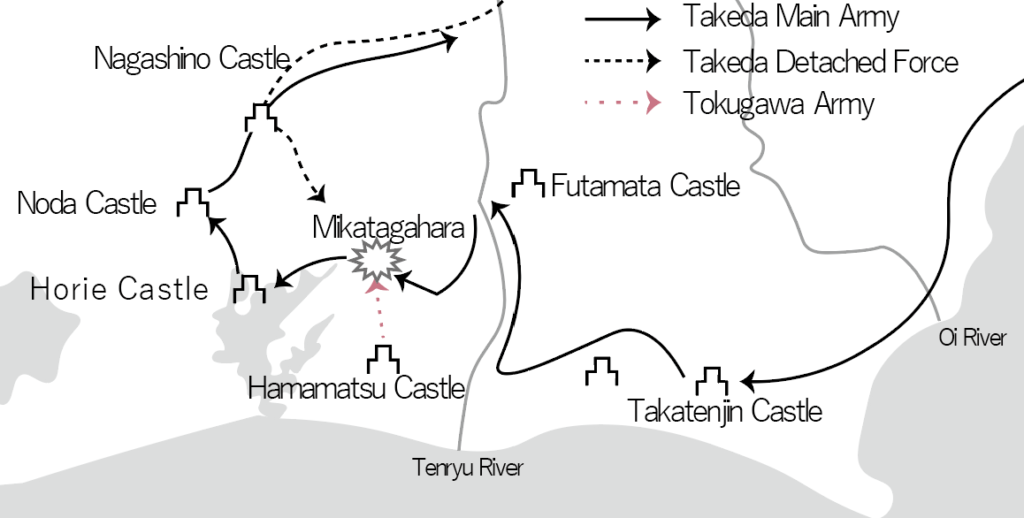
In the intense fighting, the Takeda forces successfully broke through the center of the crane-wing formation where Ieyasu had positioned his troops, defeating the Tokugawa army. Over a thousand Tokugawa troops were killed, resulting in a decisive victory for the Takeda. Following the battle, Shingen targeted Horie Castle, a vital point for water transport on Lake Hamana that served as a supply route from Owari and Okazaki to Hamamatsu Castle. However, he encountered fierce resistance from Tokugawa forces and eventually abandoned the assault. Shingen then moved his army toward Noda Castle in eastern Mikawa, under Tokugawa control. Capturing Noda Castle would secure a land route back to Shinano and Kai Provinces and open the way to domination over eastern Mikawa, including Okazaki Castle. The Chinese classic The Art of War states, “Begin by winning, then fight.” In other words, “Engage only after securing the conditions for victory.” This phrase aptly encapsulates Shingen’s strategic approach to warfare.
The Great Victory at the Battle of Mikatagahara
After the Takeda army achieved a decisive victory over the Tokugawa-Oda alliance at the Battle of Mikatagahara, Ashikaga Yoshiaki, the shogun of the Muromachi shogunate at the time, urged Shingen to make peace. However, Shingen refused and left the following words:
“The rebels Nobunaga and Ieyasu have burned Enryakuji Temple on Mount Hiei, shown disregard for the Imperial Court, and now act as if the realm in thiers. To leave such men unpunished is tantamount to the destruction of both Buddhist and imperial law, the work of demonic forces. I ask that an order be given for their execution. I shall personally uphold the shogun’s authority and bring peace to the realm.” This declaration can be seen as Shingen stepping forward to assert his role in Tenka Seihitsu (Pacifying the realm), at a time when Oda Nobunaga, who had originally pursued peace under Shogun Yoshiaki through his slogan Tenka Fubu (Unification of the Nation by Force), had grown increasingly opposed to Yoshiaki.
The Fall of the Great Star, Shingen
In the midst of the siege of Noda Castle, Shingen's life came to an end at the age of 53 in 1573. The Takeda army retreated to Kai. According to Shingen's last wishes, his death was kept secret for three years before a grand funeral was held at Erinji Temple. Shingen had consistently achieved victory by embodying the military strategies of Sun Tzu in numerous battles by deep cautiousness of its approach. Placing great emphasis on caution and focusing his efforts on strategies that were certain to win, and as a result, Shingen lost his sense of urgency like that Sun Tzu placed little emphasis on the concept of time. He spent 11 years on the Battle of Kawanakajima, and it took him about 10 years from the death of Imagawa Yoshimoto to actually begin his invasion into Tōtōmi. At this point, Shingen's life was nearing its end. Sun Tzu's military strategy was both Shingen's strength and his weakness. Following the death of Shingen, his son Katsuyori (1546-1582, 武田勝頼) expanded the Takeda’s territory. However, he was defeated by Oda Nobunaga and Tokugawa Ieyasu in 1582. The remnants of the Takeda clan, including the Takeda cavalry corps and the Takeda navy, were recruited by Ieyasu and fought as part of the Tokugawa forces, continuing their exploits in the Warring States period. Why not visit the sites associated with Shingen, such as the Takeda Shrine, where the Takeda clan once resided; the birthplace of Shingen at Sekisuiji Temple at the foot of Yogai Mountain, Eirinji Temple, and Kai Zenkoji Temple?
Takeda Shingen Timeline
| 1521 | 1 | Born in Kai Province; childhood name Katsuchiyo | |
| 1536 | 16 | Came of age | |
| 1541 | 21 | Succeeded as Takeda clan head | |
| 1542 | 22 | Launched invasions into Suwa | |
| 1548 | 28 | Defeated by Murakami Yoshikiyo | |
| 1553 | 33 | Fought Uesugi Kenshin in 1st Battle of Kawanakajima | |
| 1555 | 35 | Fought Uesugi Kenshin in 2nd Battle of Kawanakajima | |
| 1557 | 37 | Fought Uesugi Kenshin in 3rd Battle of Kawanakajima | |
| 1558 | 38 | Established Kai Zenkoji Temple | |
| 1560 | 40 | The Battle of Okehazama | |
| 1560 | 40 | Built Kaizu Castle | |
| 1561 | 41 | Fought bloody 4th Battle of Kawanakajima | |
| 1568 | 48 | Invaded Suruga and toppled Imagawa Ujizane | |
| 1571 | 51 | Established Dakeda Navy | |
| 1572 | 52 | Invated into Ieyasu's teritorry, Totoomi | |
| 1573 | 53 | Defeated Tokugawa at Mikatagahara | |
| 1573 | 53 | Died of illness and Entrusted legacy to Katsuyori | |
| 1575 | - | The Battle of Nagashino | |
| 1582 | - | Katsuyori committed suicide |
Recommendations to visit
Takeda Shrine
- Access: 8 minutes by bus from JR Yamanashi Station to Takeda Shrine
Kai Zenkoji Temple
- Access: 12 minutes by taxi from JR Yamanashi Station

